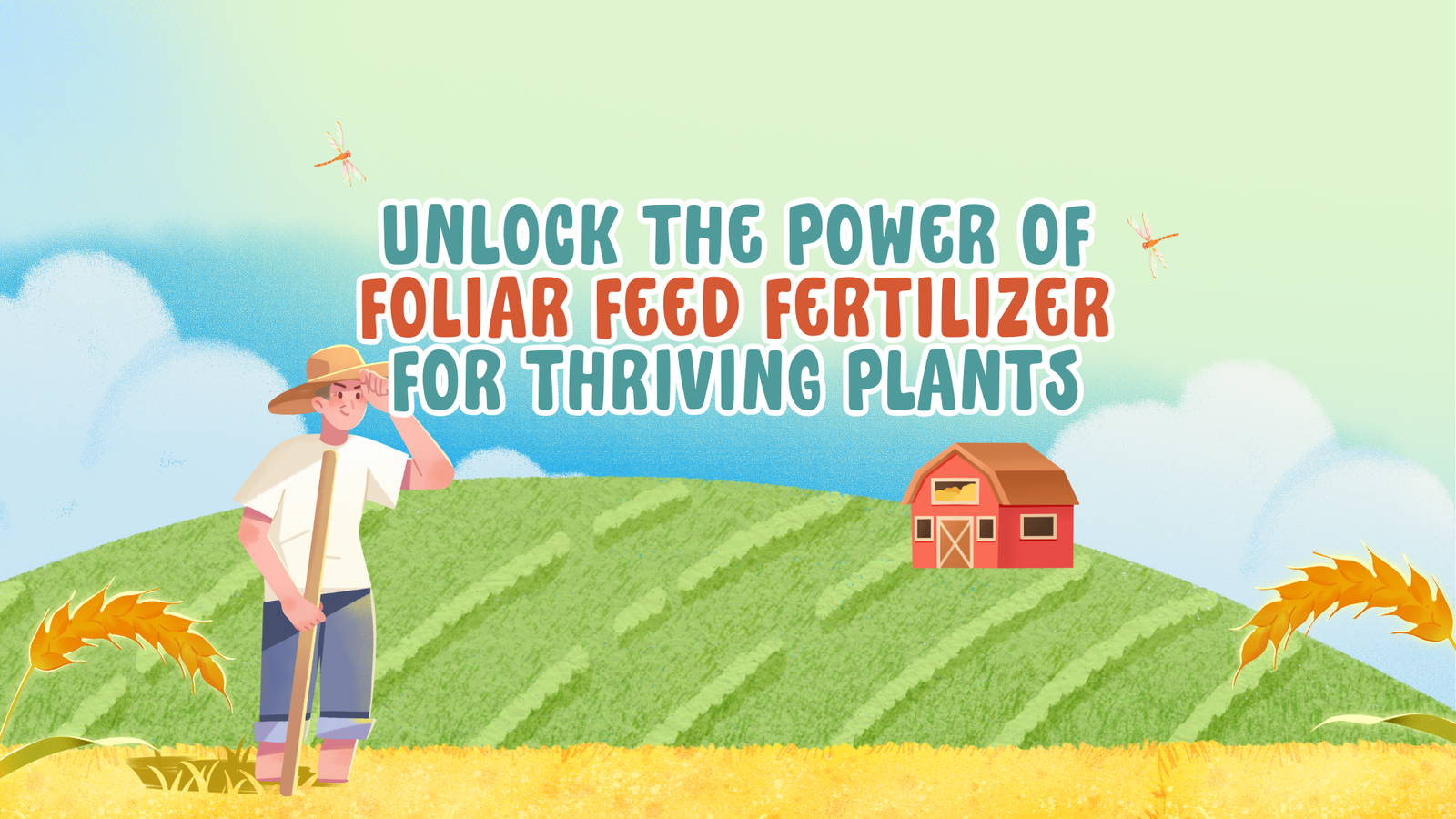Foliar feed fertilizer is gaining popularity as an efficient way to nourish plants. This method allows plants to absorb nutrients directly through their leaves, making it one of the fastest and most effective ways to improve plant health. In this article, we’ll explore the benefits of foliar feeding, how it works, and the best practices for its use.
What is Foliar Feed Fertilizer?
Foliar feed fertilizer refers to liquid nutrients that are sprayed directly onto plant leaves. Unlike traditional soil-based fertilizers, foliar feeds provide plants with essential minerals and nutrients that can be absorbed rapidly through the leaves’ stomata. This fast absorption means plants receive an immediate boost, which can be particularly helpful during critical growth stages.
The Benefits of Foliar Feeding
Rapid Nutrient Absorption
One of the primary advantages of foliar feeding is the rapid absorption of nutrients. Plants can take in vital elements like nitrogen, phosphorus, and potassium much faster than through soil application. This speed is especially useful when plants are nutrient deficient or during stressful periods like drought or extreme temperatures.
Boosts Plant Immunity
Foliar feeding not only supplies nutrients but also enhances plant immunity. By applying micronutrients like zinc, manganese, and boron, you can strengthen a plant’s natural defenses against diseases and pests. Healthier plants can fight off infections more effectively, leading to increased crop yields and quality.
Targets Specific Nutrient Deficiencies
Foliar feed fertilizer is an excellent solution when a plant shows signs of nutrient deficiency. It can be tailored to address particular deficiencies, such as yellowing leaves (often a sign of nitrogen deficiency) or stunted growth. Applying the right foliar fertilizer can quickly correct the problem and restore plant vitality.
How Foliar Feed Fertilizer Works
When you apply foliar feed fertilizer, the plant’s leaves absorb the nutrients through small openings called stomata. These stomata open during the day, allowing for the exchange of gases like oxygen and carbon dioxide. Along with gas exchange, plants can take in the liquid nutrients sprayed on their surface. Once absorbed, these nutrients move through the plant’s vascular system to different areas where they are needed.
Best Practices for Foliar Feeding
Apply in the Early Morning or Late Evening
For best results, apply foliar feed fertilizer early in the morning or late in the evening. During these times, the stomata are open, and the air temperature is cooler. This reduces evaporation and ensures that the fertilizer stays on the leaves long enough to be absorbed.
Use the Right Concentration
Using the correct concentration of foliar feed fertilizer is crucial. Over-concentration can lead to leaf burn, while under-concentration may not deliver the desired results. Always follow the manufacturer’s instructions carefully to avoid damaging your plants.
Ensure Even Coverage
It’s essential to spray the entire leaf surface evenly to maximize nutrient absorption. Using a fine mist sprayer ensures the fertilizer spreads across the leaves without pooling or running off. Be sure to cover both the top and bottom surfaces of the leaves, as some plants have more active stomata on the underside.
When to Use Foliar Feed Fertilizer
During Active Growth Phases
Foliar feeding is most effective during the active growth phases of a plant’s life cycle. This includes the early vegetative stage and the period just before flowering or fruiting. At these stages, plants have high nutrient demands, and foliar feed can provide an immediate supply to support their growth.
To Address Nutrient Deficiencies
If you notice symptoms like yellowing leaves, stunted growth, or poor flowering, foliar feeding can quickly correct nutrient deficiencies. The immediate uptake of nutrients allows plants to recover faster compared to soil-based fertilizers.
Under Stressful Conditions
Plants experiencing stress, such as drought or extreme heat, benefit greatly from foliar feeding. Soil nutrients may become less available during these times, but foliar feed fertilizer provides a direct source of essential elements to help plants withstand tough conditions.
Common Mistakes to Avoid with Foliar Feeding
Over-Application
Applying too much foliar feed can do more harm than good. Over-application can result in nutrient imbalances and cause leaf burn. It’s important to use the recommended dosage and avoid spraying too frequently.
Spraying at the Wrong Time
Spraying foliar feed during the hottest part of the day can cause the liquid to evaporate before the plant has a chance to absorb it. Always aim for early morning or late evening applications to prevent this issue.
Ignoring pH Levels
The pH of your foliar feed solution is crucial for effective nutrient uptake. Most plants prefer a slightly acidic solution, around pH 6.0 to 6.5. If the pH is too high or too low, the plant may struggle to absorb the nutrients properly.
Conclusion
Foliar feed fertilizer is an excellent tool for gardeners and farmers looking to boost plant health and address nutrient deficiencies quickly. By following best practices like applying at the right time, using proper concentrations, and ensuring even coverage, you can maximize the benefits of foliar feeding. Whether you’re growing vegetables, flowers, or fruit trees, this method can help you achieve stronger, healthier plants with improved yields.


